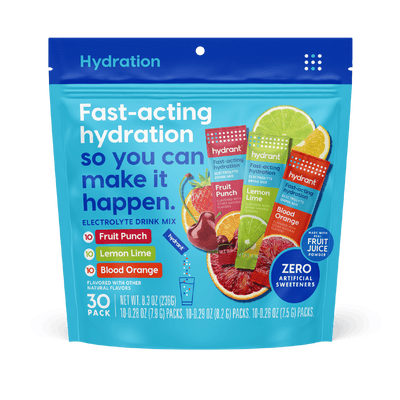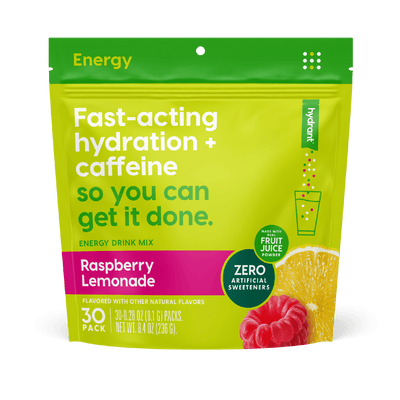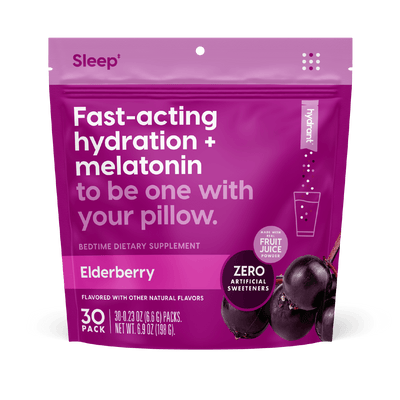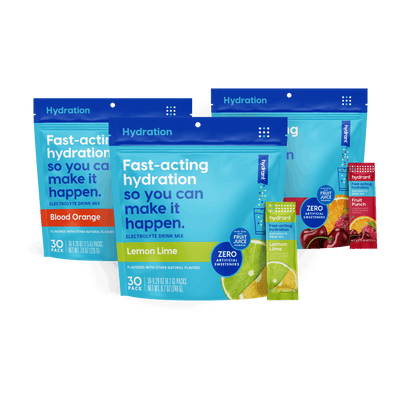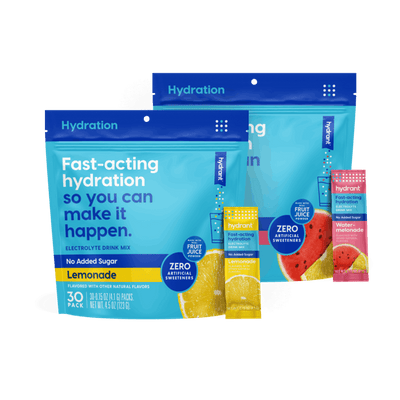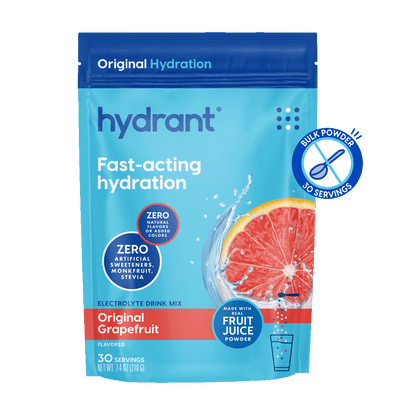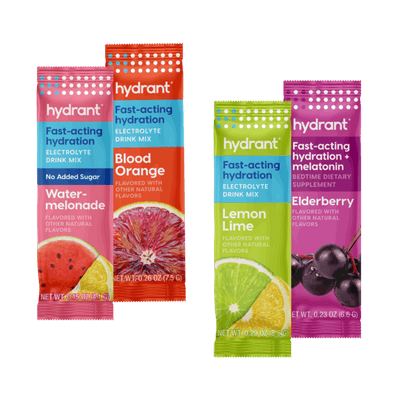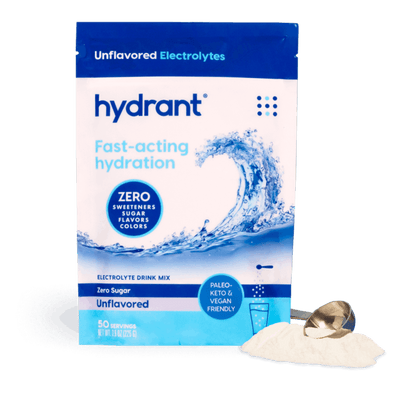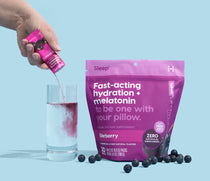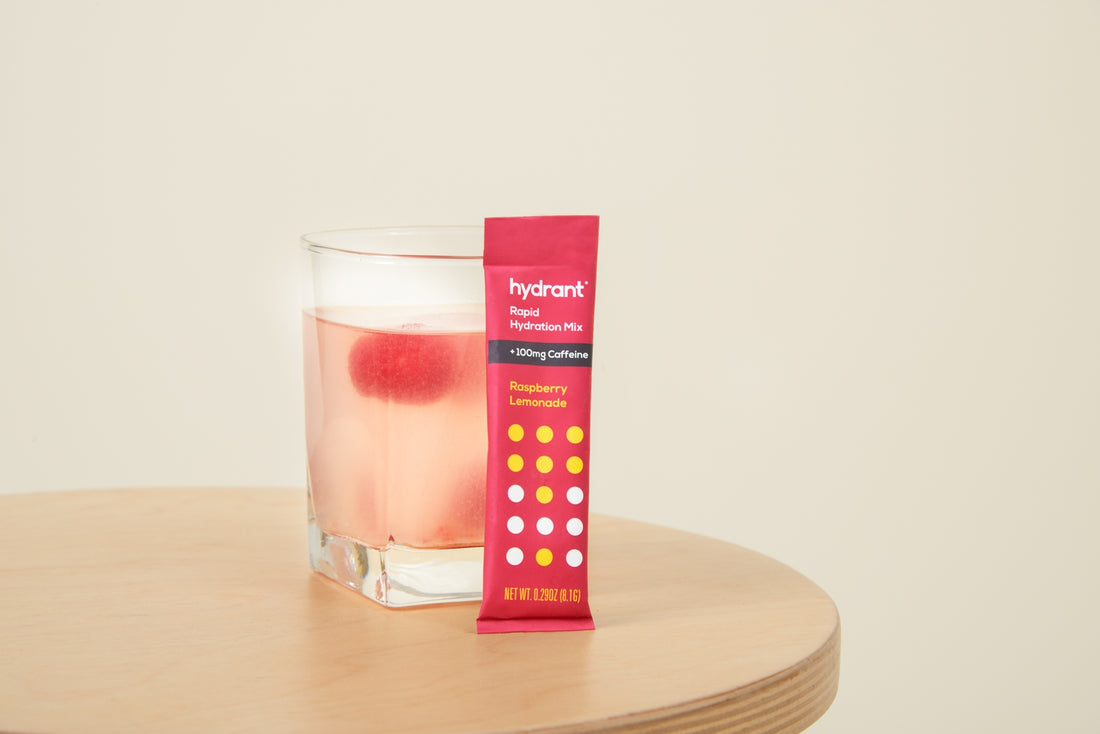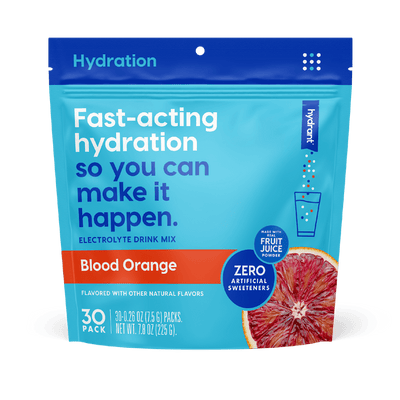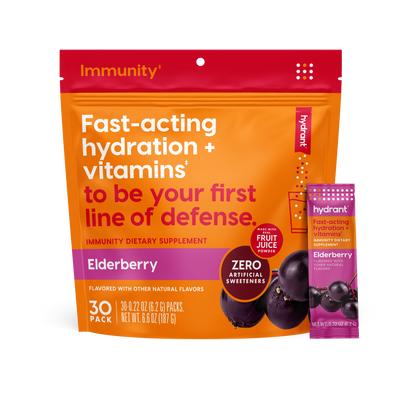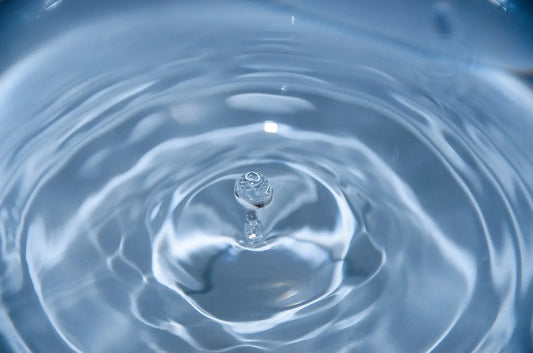If you’ve read any of our blog you’ll know that proper hydration is one of the best hacks to being your best self. Getting your hydration back in check is a sure and speedy route to recovery after illness, exercise, or a big night out. But how can you rehydrate as fast and effectively as possible? Hydrant is specially formulated for optimal hydration that gets you back in the game. Here’s how it works, fast.
How Hydrant Rehydrates Fast
Hydrant is the perfect balance of water, glucose, sodium, potassium, magnezium, and zinc—all the essential ingredients for hydration. Each of these ingredients plays a specific role in rehydration, and here we explain the role of four of the magic six.
Gradients
Before we get going, let’s quickly review the scientific principle of gradients. Very simply, water likes to be evenly spread out, as do the electrolytes and other substances in water. If there is a semipermeable membrane—for example, the membrane of a cell—between two bodies of water, the water and its molecules want to be evenly distributed on either side.

Imagine dropping some pink dye into a swimming pool. The dye will gradually spread out until the whole pool is pale pink, rather than staying bright pink where you dropped the dye, and leaving the rest of the water unaffected, right? It’s the same principle across your cells. If water moves to be better spread out, we call it an osmotic gradient. There are also gradients for other things—like electrolytes!
The final thing to remember is that not all cell membranes will allow water and electrolytes to move freely across them. They use transporters and pumps to move water and electrolytes in and out depending on where these small molecules are needed.
Right, let’s get back to our ingredients.
Water
Okay, this is a fairly obvious one. It doesn’t take a science degree to know that if you’re dehydrated (don’t have enough fluid in your body) you need to drink water (consume fluids). Hydrant comes in powder form that you add to a glass or bottle of water.

What many people don’t know however, that when we say dehydration is a lack of fluid, we don’t just mean water–the fluid contains other things too. So keep reading.
Sodium
Let us introduce you to some nifty little proteins called the Sodium-Glucose-Linked-Transporters (SGLTs). There are two key types - SGLT1 and SGLT2. SGLT1 is found on the gut-facing side of the cells that line your intestine. It has one major job: taking glucose out of the contents of your gut (aka the Hydrant you’ve just drunk) and absorbing it into your body. However, this process requires energy. Instead of using energy directly, the transporter uses the flow of sodium from the gut contents to the gut tissues to motivate the movement of glucose out of the gut. There is a higher concentration of sodium in the gut contents compared to the gut tissues, so sodium naturally moves into the gut tissues (remember those gradients?). The SGLT allows glucose to piggy-back on this flow [1-3].
So, the presence of sodium in Hydrant means that these little transporters can take glucose out of the contents of your gut, and into the tissues of your gut.
Glucose
Still with us? Thanks to sodium and the SGLT1, your gut is now absorbing the glucose. The glucose stimulates fluid absorption in the small intestine [1]. This is done partly through the coupling of water and glucose when glucose moves into the cell, and partly through the sodium and glucose moving into the cell setting up an osmotic gradient (again, remember gradients). When glucose enters the cells of the gut tissues, water follows it in from the gut in order to make sure the glucose is evenly diluted on either side, all because of the changes in the osmotic gradient.
It has been estimated that the SGLT can promote the absorption of up to 6 liters of water a day in the healthy adult intestine directly and indirectly through these mechanisms! [2]
Potassium
Once all this water has got into the cells of your gut tissues, it needs to get around the body to hydrate all your other tissues, especially your brain. This involves transfer into the bloodstream, and then back out of the blood into other cells and tissues. This is where potassium comes in (along with sodium and other electrolytes).

Potassium and sodium setup osmotic and electrochemical gradients all over your body to move water in and out of your cells and blood stream. Your cell membranes contain all sorts of little pumps that move the electrolytes around, setting up gradients that water follows.
Although we haven’t gone into detail about the roles of zinc and magnesium, they are the other two essential electrolytes. There has been some recent research suggesting further roles for these two key players as well. For example, some evidence shows that zinc may help with sodium absorption, further developing the osmotic gradient that draws water into the gut tissues [4].
Now imagine any one of these ingredients was missing. Due to the other things you eat and drink, and your body’s other systems for absorption, if you drink just water or drinks with a different balance of electrolytes, you will still become more hydrated. However, you’ll be missing out on fast hydration. Without sodium, glucose, or the other essential electrolytes the mechanisms described above just won’t work at their best – and therefore you won’t either!
Alternatives to rehydrate fast
Now we’ve run down how Hydrant works, let’s compare this to other rehydration strategies. You might be surprised!
Just Water
Water is, of course, the number one point of call for hydration. On a normal day of low activity, if you have a good diet and regular water intake, water alone is plenty to hydrate you. However, once you’ve started to become dehydrated, water isn’t enough for proper hydration, particularly if you want this rehydration fast! Read our run-down of Hydrant ingredients above to find out more.
Oral Rehydration Solutions
Technically, Hydrant is an Oral Rehydration Solution (ORS). You can make your own ORS, but chances are, it’s going to be pretty hard to get down, or at least not very pleasant. Taste is so important to us at Hydrant – you’re much more likely to drink enough to rehydrate you if it tastes good! Choose from zingy lime or pink grapefruit.
As well as taste, making it easier to get the fluids into your body quickly, Hydrant is much easier on-the-go than homemade ORS. Who wants to carry around salts, sugars, scoops, and a balance to make up solutions in the right proportions and concentrations? All this is a waste of time when you could hydrate quickly with a sachet of our electrolyte-goodness.
Intravenous Drips
People in hospital who are dehydrated, suffering fluid loss, or at risk of either of these things will often be put on an intravenous drip (IV). An IV feeds rehydration fluids straight into your bloodstream, so it’s like an ORS, but skips out the ‘O’. Sounds super speedy, right? Well, yes. One of the reasons IVs are used in hospitals around the world is that, by adding fluids straight into your body, you cut out the middle man (your gut) and hydration happens much faster.

However, you should aim to notice the signs of dehydration long before you get to the stage of needing hospitalization! Getting to hospital, and waiting to be hooked up to an IV drip is going to take far longer, and be much more inconvenient than grabbing a sachet of Hydrant and adding it to your water bottle. Even if medical staff bought an IV to you, unless there are other medical reasons that prevent you from hydrating through drinking, it’s still going to be slower than whipping out the sachet of Hydrant you stored in your wallet earlier (good idea, eh?!).
After all that, all that’s left is to try it for yourself!
Writer: Ailsa McKinlay
Editor: Elizabeth Trelstad, www.hellobeaker.com
References
[1] Intestinal SGLT1 in metabolic health and disease. Anders Lehmann and Pamela J. Hornby. 24 March 2016. Am J Physiol Gastrointest Liver Physiol 310: G887–G898, 2016. - This scientific description of SGLT provides far more detail that we need to study hydration, but often it’s papers like this that have the best explanations of the basic facts.
[2] Biology of Human Sodium Glucose Transporter. Ernest M. Wright, Donald D. F. Loo, and Bruce A. Hirayama. 01 April 2011. Physiol Rev 91: 733–794, 2011. - A very detailed scientific paper with everything you could ever want to know about the SGLT.
[3] Na+ -D-glucose Cotransporter SGLT1 is Pivotal for Intestinal Glucose Absorption and Glucose-Dependent Incretin Secretion. Gorbulev et al. January 2012. Diabetes, Vol. 61. - This paper looks more closely at the effects of the SGLT1 and highlights its fundamental importance in glucose uptake.
[4] Oral Rehydration Therapy in the Second Decade of the Twenty-first Century. Henry J. Binder & Ian Brown & B. S. Ramakrishna & Graeme P. Young. 22 February 2014. Curr Gastroenterol Rep (2014) 16:376. - Hydrant works by the same mechanisms as an oral rehydration therapy. This analysis of ORT over time is a helpful place to learn about the underlying principles of efficient hydration.
